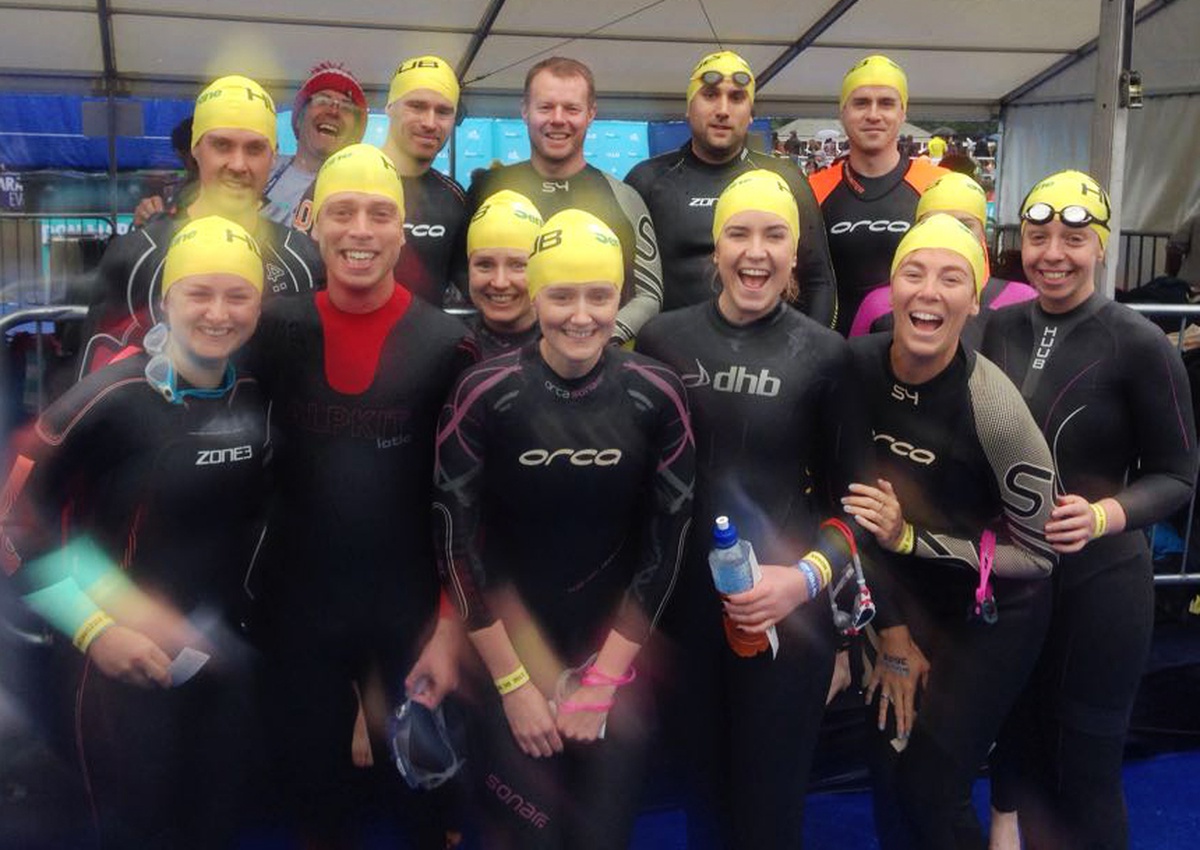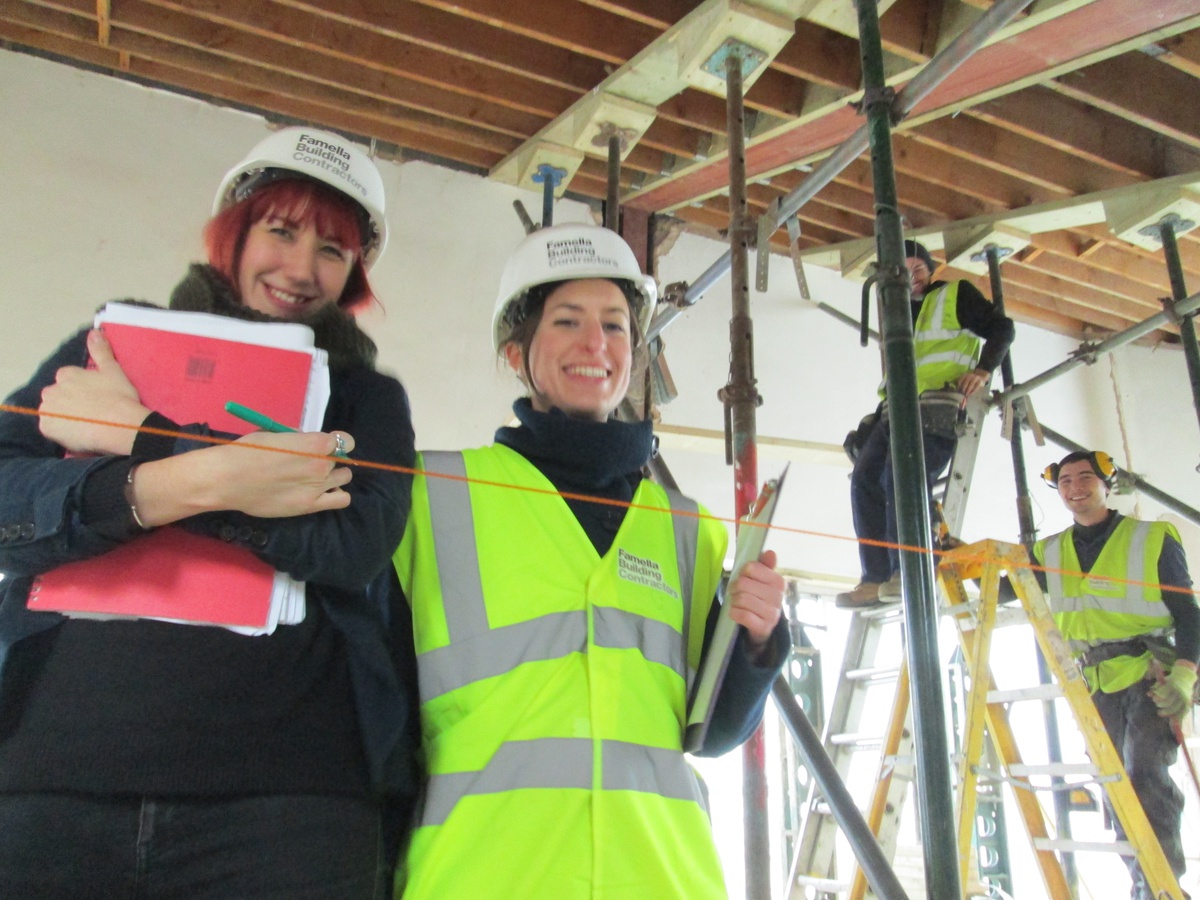NMLA SWIM THE SERPENTINE
SEPTEMBER 2018

On Saturday, a group of current and former NMLA staff, friends and partners swam a mile in the Serpentine as part of the weekend’s open water swimming festival in Hyde Park.
Following a summer of sun-drenched sea and river swims, it was pouring with rain as we made our way through crowds of bemused tourists and displaced geese to the start. It felt distinctly autumnal as we lined up on the edge of the Serpentine in our wetsuits and matching hats to a motivational soundtrack featuring Ricky Martin. After a civilised scrummage at the start, everyone settled into a rhythm for the mile-long lap in the murky greenish-grey water. We circumnavigated Christo’s vast London Mastaba, a stack of 7,506 brightly coloured barrels floating in the centre of the lake, and agreed that our frog’s-eye views of it lent a new appreciation of the piece. As we rounded the final marker buoy and then clambered up the precarious exit ramp, we emerged grinning, enjoying the familiar and addictive endorphin buzz from pushing through the chilly water. A bottle of fizz was opened and shared, and we splashed damply off to the pub to warm up and relive the summer’s swimming exploits.
For anyone considering a discovery of swimming outside (even vicariously!), we would thoroughly recommend Roger Deakin’s wonderful book Waterlog, which tracks a year of swimming in the wild across the UK and has by now inspired thousands of subversive sea, river and lake swims.
THE ELEMENT OF SURPRISE
NOVEMBER 2014

Sarah-Jane McGee, Project Architect (Right) and and Sophia Tibbo, Structural Engineer (Left) on site, 2014
I recently explained to a relative that the most exciting part of my job is the element of surprise. I compared the world of desktops and emails and repetitive strain injury to that thrill I get each Wednesday when arriving on site to inspect progress. It is the uplifting discovery of the unexpected that is most satisfying to me.
The origin of the word ‘surprise’ ranges in meaning from ‘overcome with emotion’, ‘strike of astonishment’ or ‘a taking unawares’. This is also common to the early process of design during which the building takes shape inside your mind as a sequence of spaces, moments and details. As architects, our job for many months and even years on a single project is to translate this purely imaginary set of ideas into a two-dimensional rule-book for eventual construction. The resulting documentation is scientific, precise, and impersonal. It is accompanied by reams of contracts, costs, schedules and sums. It is in short, quite dull to the naked eye.
This document then comes into contact with a wide range of people; contract managers, site agents, sub-contractors, labourers and tradesmen. They have a unique ability to bring this pile of paper to life. Over the days and months the team forms the structure like bees in a hive. One week there is a hole in the ground, soon after the steel is measured and delivered, the floors and stairs go in, the roof lights are installed, the doors are hung and the whole thing is ‘buttoned up’. Suddenly what was abstract becomes real, what were lines become tangible surfaces, shocking in their dimension and materiality.
Construction is simply connecting one thing to another thing, layering over and over and over. The physical actions are drilling, digging, hammering, stacking, lifting, fixing, pouring, spreading, sticking, brushing, nailing. It is a human activity, with each person lending his or her very specific skills to create the whole.
To me it seems surprising and almost contradictory that something as animated, chaotic and personal as a construction site can become a silent space of light falling on blank walls. The story is hidden behind white layers of plasterboard, a secret that will only be uncovered in the next round of renovation or demolition.
After all the humming and drilling the building gets built. The bees move on; an enchantingly empty hive remains. And we begin to imagine again.
Sarah-Jane McGee graduated with a first class honors degree from University College Dublin in 2008. Sarah-Jane won the Irish Architectural Graduates Association Gold Medal in 2008 and her thesis project was highly commended in the OPUS Construction Awards in 2008. Having worked in Ireland for O’Donnell and Tuomey Architects and in Italy for Mario Cucinella Architects, she joined Niall McLaughlin Architects in 2011. Since joining the practice she has worked as Project Architect on a recently completed private house in Hampstead, London as well as working on St. Cross College, St. Teresa’s Carmelite prayer room in Dublin, a fishing hut in Hampshire and the ROQ Masterplan in Oxford.

